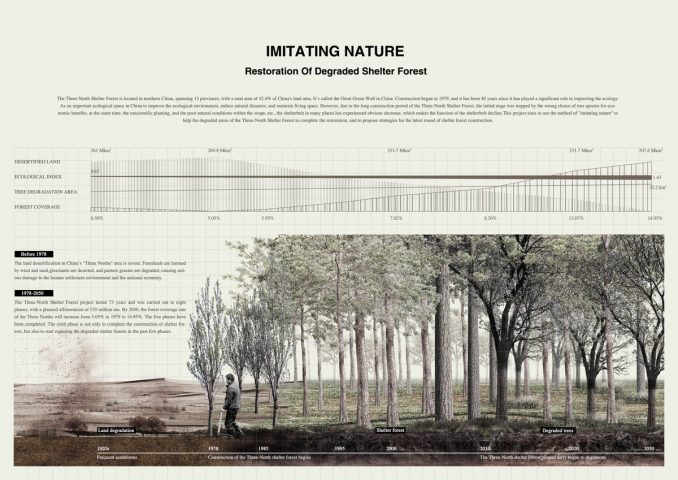
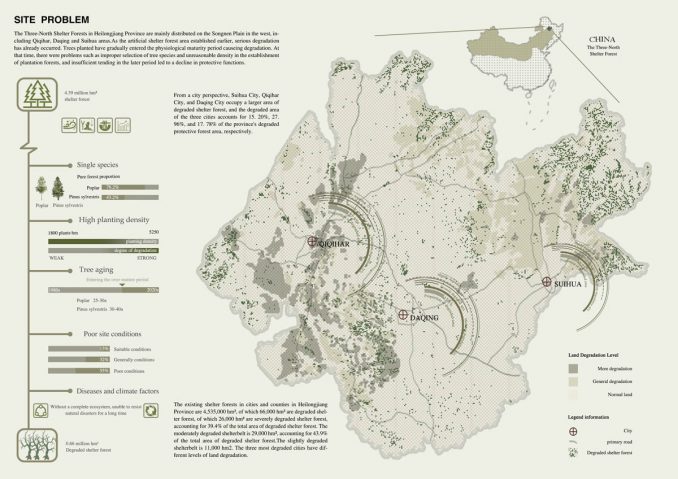
The Three-North Shelter Forest is located in northern China. Construction began in 1979, and it has been 40 years since it has played a significant role in improving the ecology. However, due to the long construction period of the Three-North Shelter Forest, the initial stage was trapped by the wrong choice of tree species for economic benefits, etc., the shelter forest in many places has experienced an obvious decrease, which makes the function of the shelter forest decline. We demonstrated this through data collection and graphing and found that the most degraded area of The Three-North Shelter Forests is located in Heilongjiang Province, China, including Qiqihar, Daqing and Suihua areas. As the artificial shelter forest area was established earlier, serious degradation has already occurred. We have analyzed the degree of degradation of the shelter forest in this area through Arcgis, and hope to improve it through ecological means.
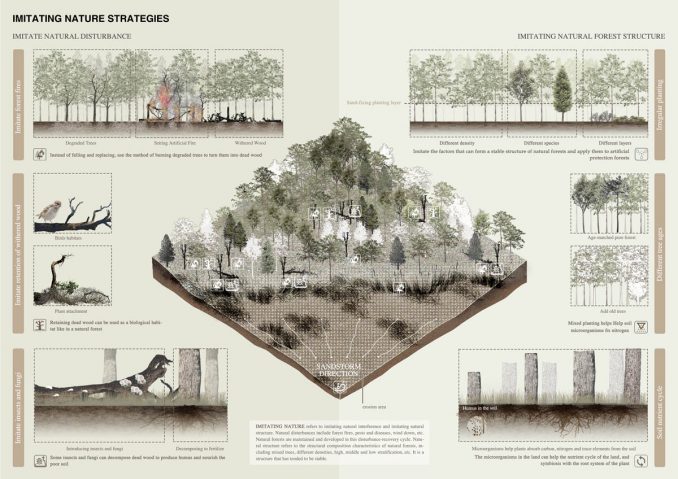
This project aims to use the method of “imitating nature” to help the degraded areas of the Three-North Shelter Forest to complete the restoration, and to propose strategies for the latest round of shelter forest construction. Imitating nature refers to imitating natural interference and imitating natural structure, including forest fires, pests and diseases, wind down, etc. Natural forests are maintained and developed in this disturbance-recovery cycle. Natural structure refers to the structural composition characteristics of natural forests, including mixed trees, different densities, high, middle and low stratification, etc. It is a structure that has tended to be stable.
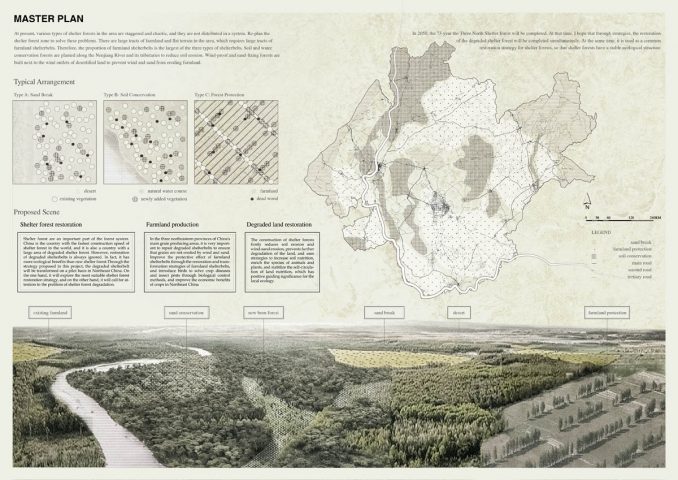
At present, various types of shelter forests in the area are staggered and chaotic, and they are not distributed in a system. We consider that re-plan the shelter forest zone to solve these problems. There are large tracts of farmland and flat terrain in the area, which requires large tracts of farmland shelterbelts. Therefore, the proportion of farmland shelterbelts is the largest of the three types of shelterbelts. Soil and water conservation forests are planted along the Nenjiang River and its tributaries to reduce soil erosion. Wind-proof and sand-fixing forests are built next to the wind outlets of desertified land to prevent wind and sand from eroding farmland.
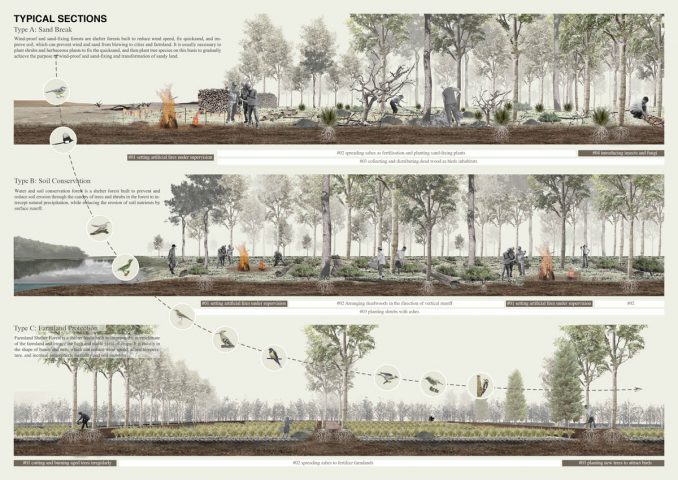
In 2050, after 73 years the Three North Shelter forest will be completed. At that time, we hope that through strategies, the restoration of the degraded shelter forest will be completed simultaneously. At the same time, it is used as a common restoration strategy for shelter forests, so that shelter forests have a stable ecological structure.
Imitating Nature
Student Names: Han Xu, Xin Liu
School: Huazhong Agricultural University, The University of Hong Kong
Advisor: Xinqi Zhuang
